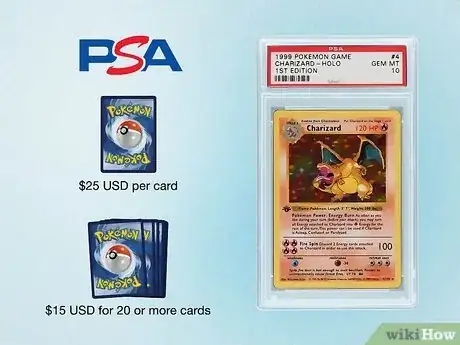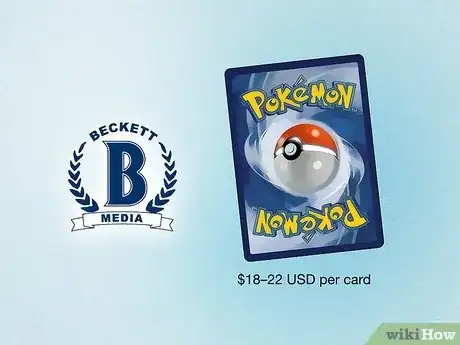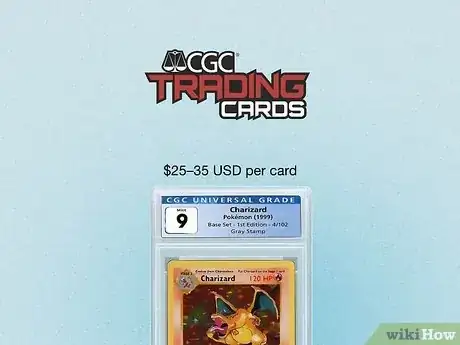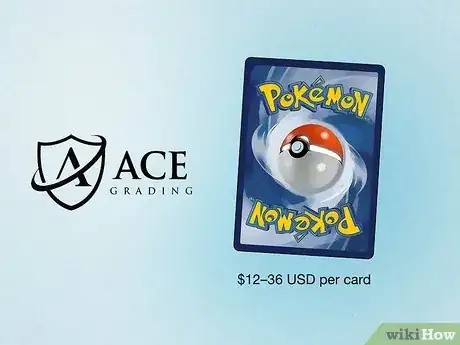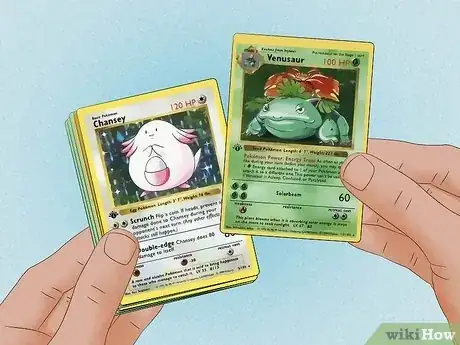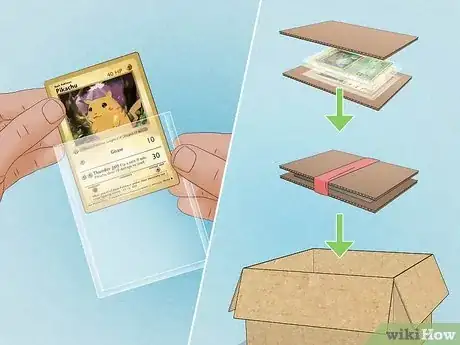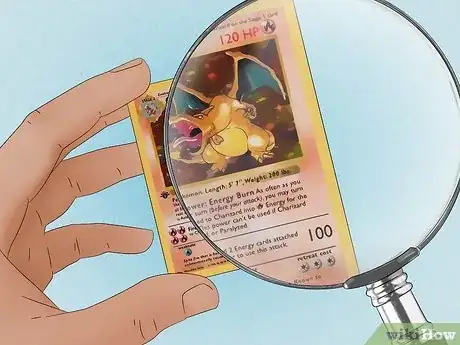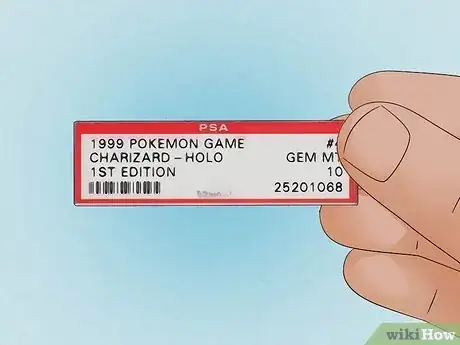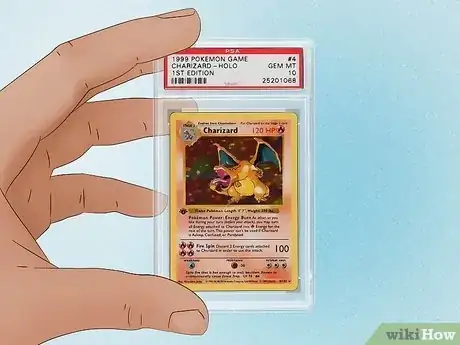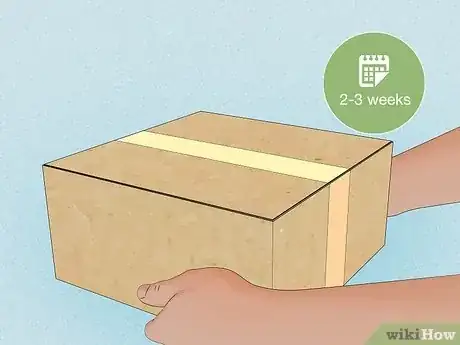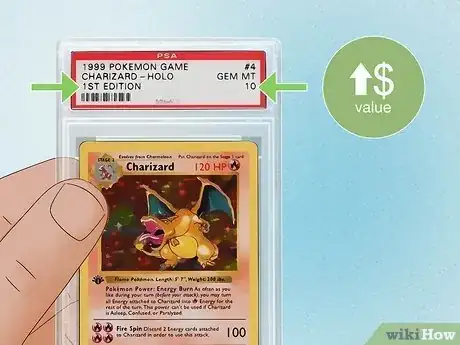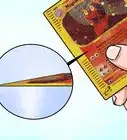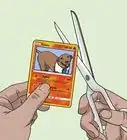This article was co-authored by wikiHow staff writer, Hunter Rising. Hunter Rising is a wikiHow Staff Writer based in Los Angeles. He has more than three years of experience writing for and working with wikiHow. Hunter holds a BFA in Entertainment Design from the University of Wisconsin - Stout and a Minor in English Writing.
There are 12 references cited in this article, which can be found at the bottom of the page.
This article has been viewed 3,012 times.
Learn more...
So you have some Pokémon cards that are in good condition, but how do you know how valuable they actually are? When you want to sell them online or just keep them safe in your collection, having your cards professionally graded is the best way to preserve their quality. There are tons of grading companies available, and we’ll help walk you through the best options. Keep reading so you know what to expect throughout the entire process of getting your Pokémon cards graded.
Things You Should Know
- Send your cards to Professional Sports Authenticators (PSA), Beckett Collectibles, or CGC Cards for the most credible grading services.
- Grading services typically cost $25–50 USD per card to place an order, but they may vary on the card’s value.
- Give the grading service around 2–3 weeks to grade your Pokémon cards and send them back.
Steps
Card Grading Companies
-
1Professional Sports Authenticators (PSA) The PSA is considered the standard for grading Pokémon cards, so it’s the most commonly used service. PSA grades on a scale of 1–10, where 1 is the worst and 10 is perfect mint condition. PSA will inspect your card for any marks, misprints, defects, or damage.[1] X Research source
- How much does it cost?: PSA grading starts around $25 USD per card for ones that are valued lower than $499 USD. If you want a quicker turnaround time or have a higher-valued card, it can cost $75 USD or more per card. You’ll be charged once PSA processes your Pokémon cards.
- If you want to get 20 or more Pokémon cards graded at the same time, choose the Bulk Grading option that’s $15 USD per card instead.
-
2Beckett Collectibles Beckett has been named one of the best grading services by collectors, so it’s extremely reputable. Beckett uses a 1–10 scale, with 10 being the best possible condition. Beckett also offers “subgrades” for corners, centered images, surface quality, and edge quality.[2] X Research source
- How much does it cost?: Expect to pay around $18–22 USD per card. If you don’t want subgrades, then the cost is about $2–4 USD less per card. If you want a faster turnaround time, then more expensive tiers are available. You must pay for your cards before they get graded.[3] X Research source
Advertisement -
3CGC Cards CGC Cards offers professional authentication and grading for Pokémon cards. When you send your cards in to have them valued, they’ll grade them on a 1–10 scale, with 10 being the highest quality. For an additional fee, CGC also offers sub-grades to check corners, centered designs, edges, and surface quality.[4] X Research source
- How much does it cost?: CGC charges around $25–35 USD per card for most cards. If you have cards worth more than $1,000 USD, then it may cost $70 USD or more per card. You don’t have to pay until your cards have gone through the grading process.[5] X Research source
-
4ACE Grading ACE Grading is a newer grading service based in the United Kingdom. While they aren’t as reputable or vetted as other services, ACE offers custom grading labels that match the colors and designs on your Pokémon cards so they stand out more in your collection. ACE measures your cards on a scale from 1–10, with 10 being mint condition.[6] X Research source
- How much does it cost?: Ace charges around £10–30 ($12–36 USD) per card depending on how quickly you want to get your cards back and if you want a custom label. You won’t pay until the grading services are finished.[7] X Research source
Card Grading Process
-
1You sort out undamaged, valuable cards to be graded. Before you send in any cards, sort through your collection to find the ones that are worth having graded. Set aside any common cards or duplicates that you have. Take out any cards that are already damaged or have printing errors since they’ll get a lower grade.[8] X Research source
-
2You ship your cards to the grading service. Start an online submission with the grading service you’re using, and list all the cards that you’re sending in. Pack your cards in semi-rigid sleeves, stack them, and secure them between 2 pieces of cardboard so your cards don’t get damaged. Put your cards in a box with the packing label and some bubble wrap before sending your cards out.[9] X Research source
- Ask your local hobby shops if they will ship Pokémon cards to grading services for you.
-
3The service checks if your cards are authentic. When the grading service receives your cards, they’ll carefully inspect your cards to make sure they’re authentic. If they suspect the card has been faked or tampered with, then those cards will not receive a grade.[10] X Research source
-
4The service inspects and assigns a grade to each card. The service will inspect the condition of the card carefully to determine the grade and value. They may look at if the printing is centered, if the corners are unbent, if there’s damage to the edges, and if there are any visible creases in the image. After inspection, they’ll grade your card on a scale from 1–10.[11] X Research source
-
5The service encapsulates and labels your card. To preserve the quality of your cards, the services seal them in small plastic cases and put labels on top. The labels describe the set and name of the Pokémon card along with the number grade. All of your grading info is right on the label so it’s easy to see at a glance.[12] X Research source
How long does it take to get a Pokémon card graded?
-
It normally takes 2–3 weeks, but it depends on the service. Check the turnaround time listed on the service you’re using to find out the exact time estimates. While most services can get your cards back in 20–30 days, it may take up to 2 months for your cards to get sent back from the grading company.
- Many services offer return services within a week at an additional cost. Most reputable grading services require expedited turnaround times for cards worth over $2,500.
Why should you get Pokémon cards graded?
-
1You learn how much your cards are worth to collectors. It’s difficult to sell to collectors if you don’t have cards graded because people are worried about getting scammed. Once you find out your cards’ grades, it’s easier to check how much the same cards have sold for online. That way, you’re able to sell your cards for a similar price and the buyer knows they’re legitimate.[13] X Research source
- While you can have any card professionally graded, save it for cards that are high-valued. Check if your cards are first-edition or if they have holographic images to determine if they’re valuable.
-
2Your cards stay in good condition. After a service professionally grades your card, they encapsulate it in a clear case to preserve the quality and protect it from any other damage. Since your card’s value is based on its condition, grading your cards ensures they stay safe in your collection or when you’re selling them.[14] X Research source
- If you want to protect cards on a budget, load them into top-loading sleeves.
You Might Also Like
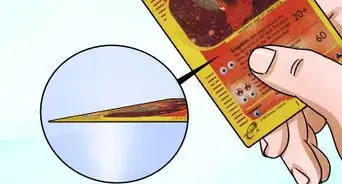
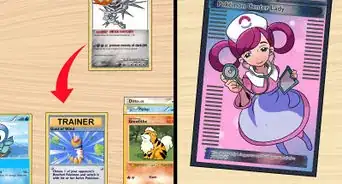

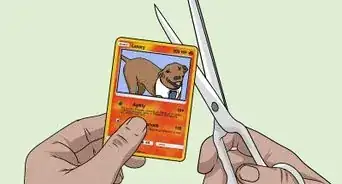 How to Make Your Own Custom Pokémon Card
How to Make Your Own Custom Pokémon Card

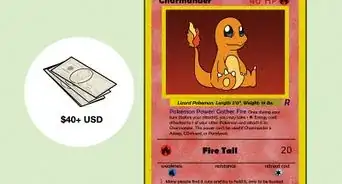 Base Set Pokémon Card Values (First Edition, Shadowless, & Unlimited)
Base Set Pokémon Card Values (First Edition, Shadowless, & Unlimited)
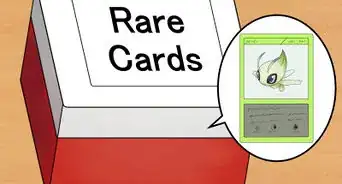
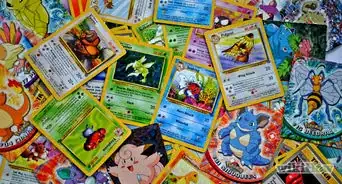
-Step-8.webp)

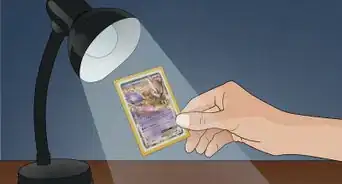
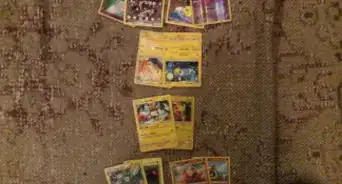
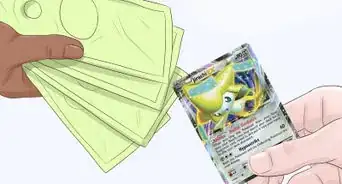
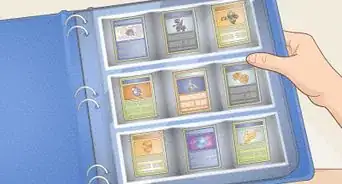 How to Customize a Binder for Pokémon Cards
How to Customize a Binder for Pokémon Cards
References
- ↑ https://youtu.be/38jX8p8adNY?t=149
- ↑ https://www.beckett.com/grading
- ↑ https://www.beckett.com/grading/bgs_submission_form
- ↑ https://www.cgccards.com/card-grading/grading-process/
- ↑ https://www.cgccards.com/submit/services-fees/cgc/
- ↑ https://acegrading.com/grading-scale
- ↑ https://acegrading.com/pricing
- ↑ https://youtu.be/INHKph9yn00?t=164
- ↑ https://resources.psacard.com/PSA-How-To-Submit.pdf?v=2021d
- ↑ https://www.cgccards.com/card-grading/grading-process/
- ↑ https://www.cgccards.com/card-grading/grading-process/
- ↑ https://www.psacard.com/services/tradingcardgrading/grading
- ↑ https://youtu.be/ij22BehudyY?t=78
- ↑ https://youtu.be/-73ZfMQcbvM?t=47
- ↑ https://resources.psacard.com/PSA-How-To-Submit.pdf?v=2021d
About This Article

